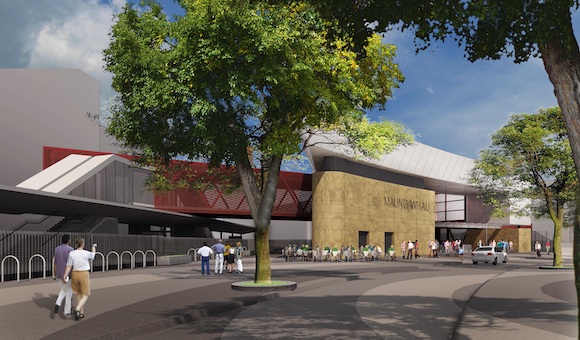
The Link Alliance, which includes VINCI Construction subsidiaries VINCI Construction Grands Projets (main contractor) and Soletanche Bachy International, along with their partner Downer and designers Aecom, WSP-Opus, and Tonkin & Taylor, has today signed the Design-Construction Alliance contract for Package 3 of the City Rail Link project in New Zealand.
The contract, worth 1,658 million New Zealand dollars or approximately 970 million euros, is for the design and construction of 3.45 km of extension of a train line, including 3.2 km of tunnel, to link the existing Britomart station to the existing Mount Eden station. Along that line, three new stations will be built, two of which are underground. The tunnels will be made using an earth pressure tunnel boring machine with a diameter of 7.18 m.
The signed contract is an “Alliance” type, meaning the designer-constructor consortium and the client, City Rail Link Limited, can create a single and integrated team to deliver the project to Auckland residents in 2024.
For a total cost of 4.419 billion New Zealand dollars, or 2.586 billion euros, the City Rail Link project is expected to double the number of people who can reach downtown Auckland in under 30 minutes. This new train line has been designed to accommodate 54,000 passengers per hour at peak travel times, which is the equivalent of two double four-lane motorways.
With this contract, VINCI Construction once again demonstrates its ability to support urban centres in designing and constructing large urban mobility and public transport projects, as it does in France, Hong Kong, Singapore, Doha, and more recently, Virginia (USA), and Ottawa (Canada), with the design-construction contract for the LRT.
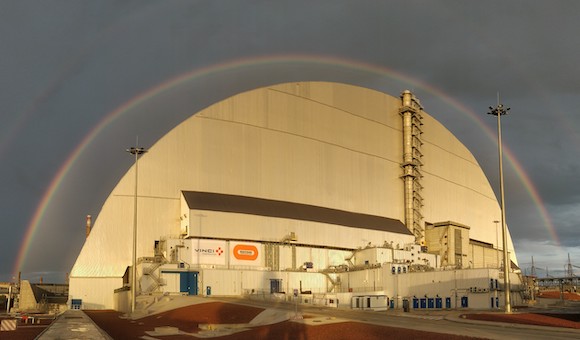
VINCI Construction Grands Projets and Bouygues Travaux Publics, partners in the NOVARKA consortium, symbolically handed over the key to the Chernobyl New Safe Confinement to the Ukrainian authorities at a ceremony that was held on site on Wednesday 10 July, in the presence of the Ukrainian President, Volodymyr Zelensky.
The delivery of this project marks the end of an outstanding and exceptional building site that lasted for 12 years and was conducted under unique conditions, with more than 10,000 workers and technicians of NOVARKA putting in a total of 33 million working hours to complete the construction of the New Safe Confinement for the damaged reactor no. 4. The rigorous execution and the innovative methods that were implemented enabled this project to come to fruition without any major work accident or radiological incident.
The Chernobyl arch is the largest moveable land-based structure ever built, with a span of 257 metres, a length of 162 metres, a height of 108 metres and a total weight of 36,000 tonnes equipped. It will make the accident site safe and with a lifetime of 100 years allow for the future dismantling of the ageing makeshift shelter from 1986 and the management of the radioactive waste.
This project was made possible thanks to financing spearheaded by the EBRD, thanks to the Project Management of Bechtel and thanks to the day-to-day backing of the client, the Chernobyl Nuclear Power Plant (ChNPP).
“Remember, back in 1992, we had to work out how to do everything from scratch…”, declared Patrick Kadri, Chairman of VINCI Construction Grands Projets. “We faced a blank sheet and had just won a conceptual competition. It took a lot of audacity, vision, and a fair amount of madness to embark on this project! The challenges were monumental: to design a state-of-the-art prototype in an extremely constraining environment, constantly pushing against the limits of know-how, striving to secure the cooperation and endorsement of all the stakeholders worldwide, inventing materials that did not exist and unique construction methods. This project occupied a major part of our working lives. And we are all aware of the environmental progress that this achievement represents for Ukraine, its neighbouring countries and the whole of Europe.”
“One doesn’t get a chance to be involved in two building sites like that one in one’s career”, said Marc Adler, Deputy Chief Executive Officer of Bouygues Travaux Publics. “Because it was huge, because it was complicated, because Europe and the whole world had bet a lot on our success. Each of our trades really went into overdrive and surpassed themselves: the engineers, the radiation protection people, the employees in charge of executing the work, the project managers…not to mention the people in charge of human resources, who recruited staff in more than 30 countries. Chernobyl will be known in the history of civil engineering as a concentrate of innovation, and the engineers who took part in this project are already transmitting the teachings of this outstanding endeavour in engineering schools.”
The acceptance of the project by the ChNPP heralds a new era in the history of Chernobyl, that of the dismantling of the damaged facilities, made possible by the demolition equipment integrated within the arch and controlled remotely. A life size trial was conducted successfully on 25 April 2019. The arch was designed to last for 100 years.
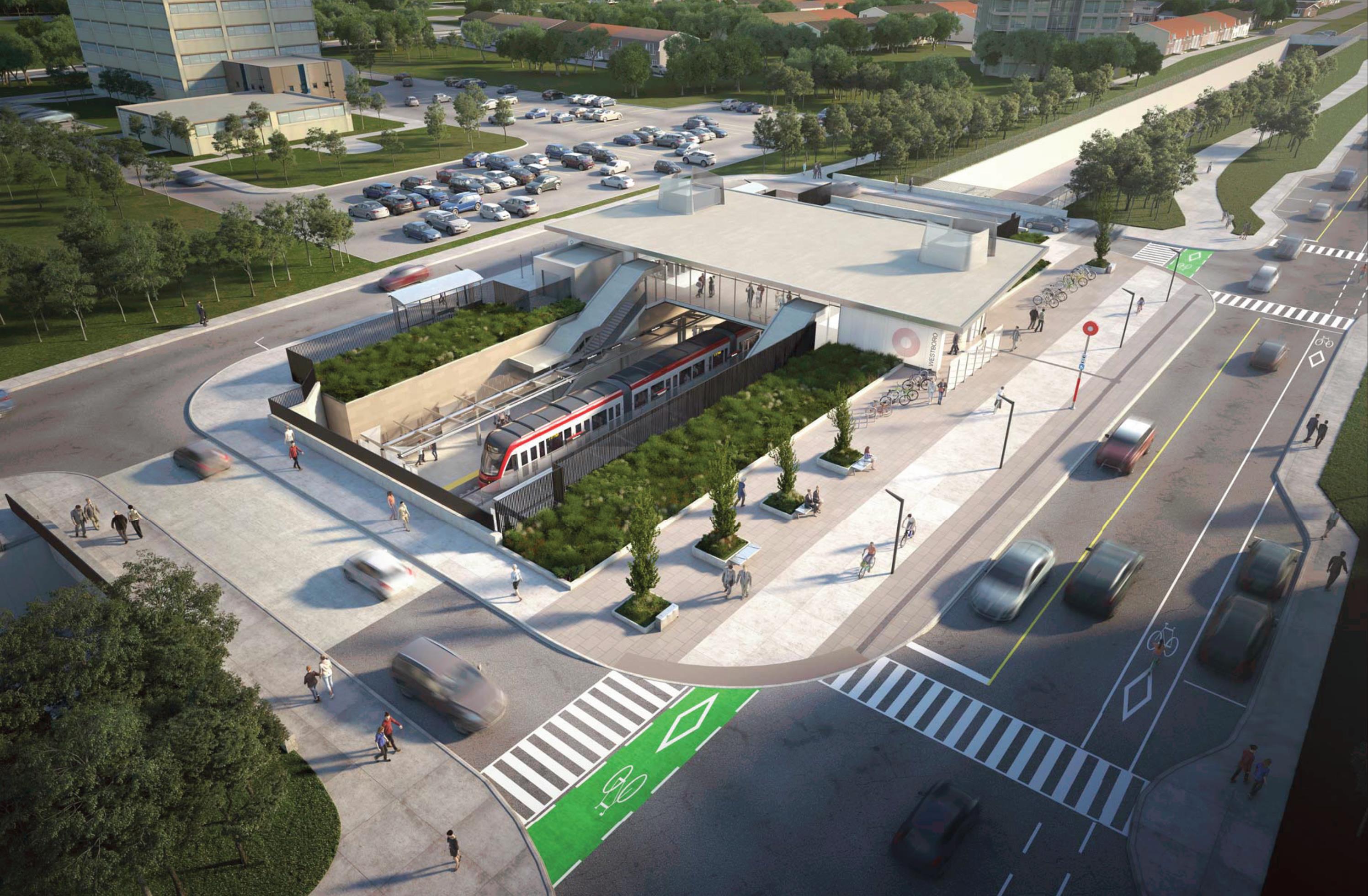
The city of Ottawa has selected East West Connectors, a joint venture led by Kiewit (60%) and VINCI (40%) through its subsidiaries Eurovia, VINCI Construction Grands Projets and Dodin Campenon Bernard, to build the extension to the Confederation Line, one of the two lines in Stage 2 of Ottawa’s O-Train light rail transit (LRT) system.
The contract, worth €1.7 billion, covers design, construction and financing of 27.5 km of infrastructure to extend the Confederation Line to the west and east. Drawing on the expertise of the various entities, VINCI, in a joint venture with Kiewit, will build 4 km of cut-and-cover tunnels, 20 engineering structures, 16 stations and a maintenance centre. It will also undertake localized widening of 12 km of motorway to permit LRT system construction and provide the associated systems such as the power supply, supervision and voice-data-image system, signalling and train control system.
In addition to the Confederation Line extension, Stage 2 of the Ottawa O-Train includes extending the Trillium Line to the north and south. When Stage 2 is brought into service in 2025, the O-Train LRT will stretch over almost 64 km and have 41 stations. It will provide rapid and reliable rail service to nearly 80% of Ottawa’s population and carry up to 48,000 one-way passengers a day during peak periods.
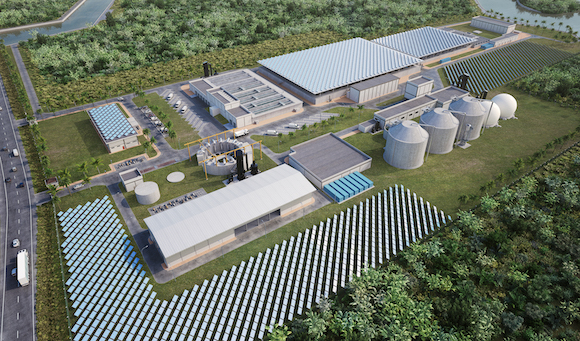
The consortium consisting of VINCI Construction Grands Projets (50% share and lead contractor) and Acciona Agua S.A. (50%) won the contract for the design-build portion of phase 1 for the Nhieu Loc-Thi Nghe wastewater treatment plant, in Ho Chi Minh City. The design-build portion of the contract is set to take five years for completion, including the starting-up process and acceptance of works. The project also calls for operating and maintaining the facility for a five-year period.
This wastewater treatment plant project, which is financed by the World Bank, is worth €200 million (€170 million for the design-build portion and €30 million for operation and maintenance). With a peak capacity of 34,000 cubic metres per hour, it will include a pumping station, biological treatment, disinfection, sludge treatment, odour treatment as well as connection to the city’s sewage system.
The plant, which will treat wastewater from the Nhieu Loc-Thi Nghe Basin, will be an essential part of Ho Chi Minh City’s second environmental plan and will benefit more than a million residents.
The project will include the hiring of up to 800 local labourers at peak periods. Also, nearly 25,000 hours of training are planned to ensure everyone’s safety at the worksite as well as the completed structure’s quality at delivery.
This new contract bolsters VINCI Construction’s presence in Vietnam, where the Group, through its subsidiaries VINCI Construction Grands Projets and Bessac, Soletanche Freyssinet’s subsidiary specialized in microtunnelling, is currently carrying out a design-build project for a 10-kilometre treated-water transfer pipeline that will supply drinking water to the centre of Ho Chi Minh City.
VINCI Construction Grands Projets has provided support to Vietnam on numerous sanitation projects in the cities of Thai Nguyen and Hoi An in 2016, Vung Tau in 2013, and Ha Dong in 2008.
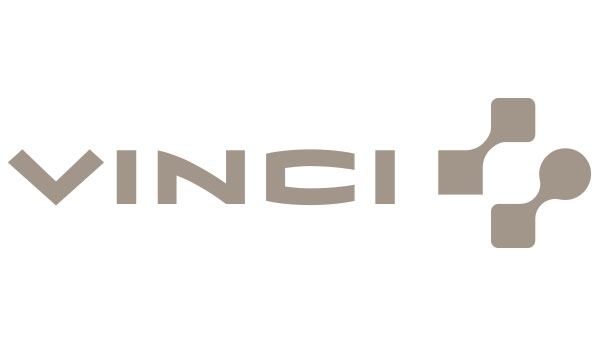
The global union federation BWI (Building and Wood Workers’ International) conducted the first on-site audit of the operations of QDVC (a Qatari company owned by Qatari Diar Real Estate Investments Company and VINCI Construction Grands Projets) in Qatar on 8 and 9 January 2019, accompanied by French trade union representatives (CGT, CFDT and CFE/CGC) from VINCI. This joint audit followed the agreement on workers’ rights signed in 2017 between BWI, VINCI and QDVC at the International Labour Organisation (ILO) headquarters in Geneva.
The audit was conducted at QDVC’s main project, the Lusail Light Railway Transit System (LRT), and at the workers’ accommodation.
- It included interviews with workers on site, workers’ representatives and safety champions without management supervision;
- On the second day, the ILO Project Office in Qatar and the Qatari Ministry of Administrative Development, Labour and Social Affairs (ADLSA) took part in a presentation of the ongoing pilot project between QDVC, the ILO and ADLASA, which aims to ensure the fair recruitment of workers hired in Bangladesh for Qatar by QDVC’s recruitment and placement agencies.
The audit covered recruitment and employment practices, health and safety, working conditions, accommodation and grievance mechanisms for all QDVC workers, including subcontractors and manpower providers.
The findings of the audit emphasise QDVC’s fair recruitment and employment practices, the good level of health and safety observed at its sites, the safeguarding of workers’ rights and also proactive initiatives such as:
- the Incident and Injury Free (IIF) safety programme;
- the “buddy peer-support program” to prevent psycho-social risks;
- the grievance mechanisms for employees and subcontractors.
The audit also noted that workers are paid above the minimum wage and are satisfied with their overall conditions. The main concern that they voice is the fear of unemployment due to the lack of commercial prospects matching QDVC’s business model.
The auditors were able to attend the election of QDVC’s Workers’ Welfare Committee (WWC) and noted that the ballot and the counting of votes were carried out properly.
· A month before the audit, 31 candidates campaigned to be elected to the WWC. The level of participation in the election was 84% (and increase of 12 points compared to the previous election), with 879 out of a total workforce of 1,047 casting their votes.
QDVC had previously organized elections for its WWC in 2016, but this was the first time that an independent third party was able to observe and assess the process.
BWI and the French unions participating in the audit suggested areas for improvement including:
- providing WWC representatives with more time off to consult with other workers;
- introducing better integration of the existing grievance mechanism and the WWC;
- encouraging more detailed analysis of non-work-related accidents.
Following the audit, QDVC undertook to follow up the BWI recommendations, to continue with the training of the newly elected workers’ representatives and to increase collaboration in the area of fair recruitment of workers. The full audit report can be consulted at: www.vinci.com/publi/vinci/2019-01-BWI-QDVC-VINCI-Joint-Audit-Report-En.pdf.
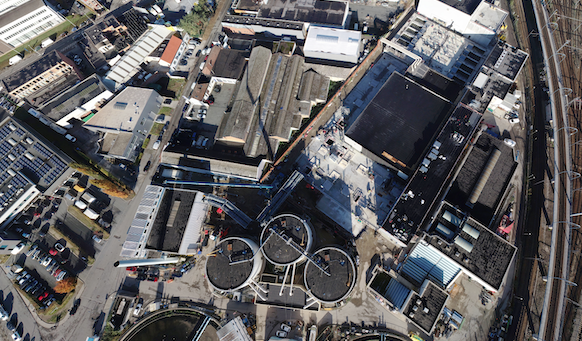
The Minister of Environment of the Brussels-Capital Region, Céline Fremault, has opened the Brussels South wastewater treatment plant today. The plant includes Europe’s second-largest ultrafiltration membrane surface, put into service by VINCI Construction Grands Projets. This project, which has thus concluded a second major upgrading phase, is carried out by a consortium consisting of VINCI Construction Grands Projets, CFE, and Nizet Entreprise on behalf of the city’s water-management authority, Société Bruxelloise de Gestion de l’Eau.
From now on, a quarter of the wastewater produced in Brussels Region, which is equivalent to the volume consumed by 360,000 residents, will be treated using a high-performance process that can filter bacteriological waste and re-use water in sprinkling and irrigation systems.
This new ultrafiltration system, implemented by VINCI Construction Grands Projets, comes into play in the final stage of treated water and sludge separation thanks to the deployment of a 226,000-square-metre filtration surface. The process is preceded by advanced primary treatment stages (implemented during the first upgrading phase) using fine-screening settings of 6 millimetres and 1 millimetre and lamellar settling. It provides biological treatment of water to eliminate nitrogen and phosphorus in mixing and aeration basins 30,000 cubic metres in volume and 15 metres in depth. In rainy weather conditions, primary treatment can handle up to 5 cubic metres per second, with ultrafiltration membrane capacity approaching 2 cubic metres per second.
This technology, which combines peak performance (currently a pinnacle in the wastewater treatment sector) and compactness (226,000 square metres of membranes installed on a 1,500-square-metre surface), provides considerable benefits to projects with severe space constraints. That is the case at the Brussels South wastewater treatment plant, whose current site is cramped and packed with multiple structures in a busy urban setting.
Yet another constraint is having to maintain operations at the plant during the entire duration of the project in accordance with a highly precise and demanding task-sequencing schedule. Upon entry into service, each new project phase is operated by the consortium, with VINCI Construction Grands Projets providing close monitoring of the process’s development. This overview phase for the new ultrafiltration complex will last two years.
A new and final project stage will be launched in early 2019 with the construction of digestion (or methanisation) structures to handle sludge resulting from water treatment and of structures dedicated to the re-use of produced biogas for heat and electrical power generation as a means of limiting the new Brussels South wastewater treatment plant’s environmental impact.
Brussels South is the tenth membrane-treatment project implemented by VINCI Construction Grands Projets. Its scope and complexity, however, pave the way for new developments in other large cities striving to preserve resources and their reception environments.
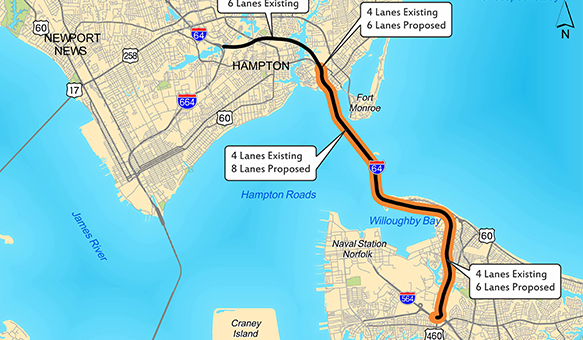
The Governor of the State of Virginia in the United States has announced that the joint venture comprising VINCI Construction Grands Projets and Dodin Campenon Bernard, both VINCI Construction subsidiaries (33%), Dragados USA (42%) and Flatiron (25%), is preferred bidder for the contract for extending and upgrading the I-64 between Hampton and Norfolk, worth €2.9 billion ($3.3 billion).
The new component involves digging two tunnels, each 2.4 km long, between two artificial islands using a variable density tunnel boring machine with a diameter of 13.56 metres. The two islands will be connected to the continent by two viaducts over the sea, the first measuring 1 km and the other 1.9 km.
For the existing component, demolition, reconstruction and widening works will be carried out over 14.5 km of road and two additional traffic lanes will be created in each direction. The road will continue to be used throughout the works.
The project’s aim is to decongest the existing network: the existing road, which dates back to 1976, is used daily by over 100,000 vehicles, causing tailbacks of up to 8 km to the bridge upstream.
VINCI is a recognised player in the modernisation and extension of the US road network. In December 2016, for instance, VINCI Construction Grands Projets delivered the Ohio River Bridge between Indiana and Kentucky, which included a 762 metre cable stayed bridge, a 512 metre twin-bore tunnel and 19 engineering structures. The Ohio River Bridge project was the VINCI Group’s first public-private partnership in the United States.
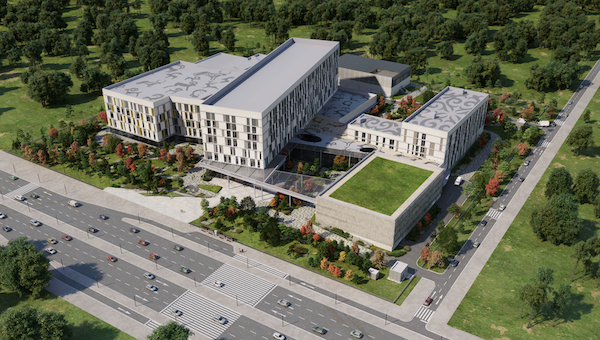
For the third year in a row, VINCI Construction Grands Projets has been awarded the prize in the “building projects outside France” category for its preliminary design of the Oncology Centre in Astana, Kazakhstan. The jury was won over by the collaborative process involving participants based in different continents and the implementation of a full BIM initiative for the first time in this Central Asian country. The teams also created mock-ups of more than 500 pieces of medical equipment from instruction manuals and technical fact sheets.
The winner in the “new projects over 40,000 m2” category was the Tour des Jardins de l’Arche in Paris La Défense area. This project was developed by ADIM Paris Ile-de-France (a VINCI Construction France subsidiary), responsible for project management, using 3D printing to produce a model equipped with 500 sensors for wind tunnel testing. The project structured and implemented ambitious BIM technology from the very first stages of design ranging from model creation and works package coordination to using an effective collaborative platform and process involving all the actors in the project.
Citinéa (a VINCI Construction France subsidiary) won the prize in the “renovation projects over 40,000 m2” category with its Noirettes & Grand Bois residential rehabilitation project in Vaulx-en-Velin in the Rhône region. BIM, used from the programming to operational phase, allows the numerous participants in the project to benefit from an integrated process. The joint use of 3D scanning technology to create mock-ups of existing buildings and prefabricate walls with a structural framework in wood using BIM should allow the company to implement the systemisation of the rehabilitation of 980 housing units over a nine-month construction period.
Having received five silver BIM awards since 2014*, VINCI Construction France, through its subsidiaries and engineering teams, has indisputably established its BIM expertise and know-how.
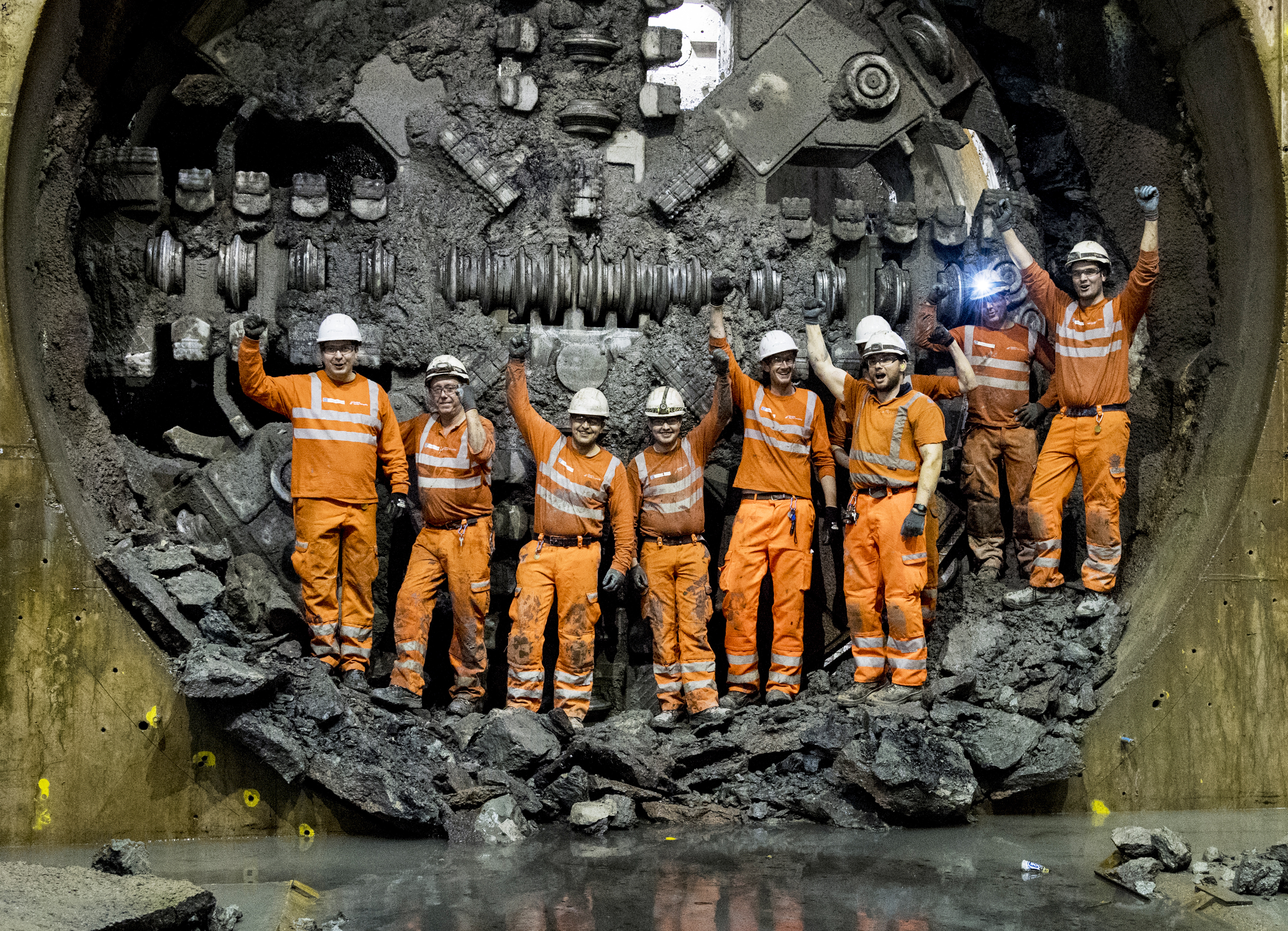
VINCI Construction Grands Projets, in joint venture with its British partner Costain, has just delivered Scotland’s longest wastewater tunnel. At 4.7 metres in diameter and 5 kilometres in length, this major structure, valued at £100 million (€115 million), is part of a programme by Scottish Water, the national water-management authority, designed to enhance water quality, preserve the environment, and prevent flooding in and around Glasgow. On July 30, 2018, Roseanna Cunningham, Scotland’s Cabinet Secretary for Environment, Climate Change and Land Reform, officially launched the Shieldhall Tunnel.
A major environmentally friendly project for Scotland
This now-completed project delivers major environmental benefits to Greater Glasgow, including a cleaner River Clyde. By providing additional storage capacity of 90,000 cubic metres, which is equivalent to 36 Olympic-sized swimming pools, the new tunnel will relieve the current sanitation network and reduce flooding risk in the region. At the official launch of the Shieldhall Tunnel, Environment Secretary Roseanna Cunningham emphasised the structure’s strategic importance: “Communities across Glasgow will benefit for years to come from this latest extraordinary feat of engineering, which lies hidden deep beneath the city.” Completion of the Shieldhall Tunnel is a key achievement in the broader programme designed to modernise Glasgow’s current wastewater-management network.
Leveraging leading-edge expertise to ensure successful project delivery
A work team nearly 100-strong was mobilised for a period of two years to achieve this major project. A slurry shield tunnel-boring machine (TBM), named Daisy the Driller by a local schoolboy, was used on the project. This 1,000-tonne, 180-metre-long TBM was launched into a cut-and-cover trench 200 metres long, 6 metres wide large, and 10 metres deep. Construction of the trench required excavating more than 25,000 tonnes of material in a very constricted working area in close proximity to local residents. The TBM was used in a very busy urban setting beneath active railways and former coal quarries that required treatment prior to the TBM’s passage.
In all:
- More than 500,000 tonnes of soil, stone, and clay were excavated, and 90% of this material was recycled
- More than 3,200 concrete rings were installed
- 5 million work hours were required to complete the project
VINCI Construction Grands Projets, a leading player in tunnel construction and in the United Kingdom
In the United Kingdom, VINCI Construction Grands Projets, a subsidiary of VINCI Construction, provides development support to large cities on their sanitation and sewerage schemes thanks to its expertise in large-scale tunnel design and construction. In January 2016, the Company delivered the 7.7-kilometre Lee Tunnel in London. Currently, it is carrying out the Tideway project in conjunction with partners, including a main 5.5-kilometre tunnel in connection with the Lee Tunnel project.The Shieldhall Tunnel is yet one more achievement in the long list of underground works delivered by VINCI Construction Grands Projets, including the Hallandsås railway tunnels in Sweden, the El Teniente mine-access tunnels in Chile, and metro-construction projects in Hong Kong, Doha in Qatar, and Cairo in Egypt. The Company is also active in France on various lots on the Grand Paris Express project (building Line 15 southbound and extending Line 14 southbound). These achievements add to the expertise that VINCI Construction Grands Projets can deploy on current underground works in the United Kingdom. In addition to handling one of the three lots on the Tideway scheme, the Company is currently managing two mandates as part of the Crossrail network construction project, including building structures at Whitechapel Station and tunnels beneath Liverpool Street Station and Whitechapel Station.
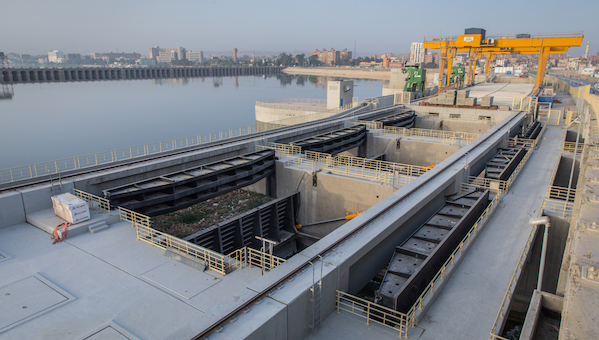
On August 12, 2018, VINCI Construction Grands Projets delivered the new Assiut Dam, located midway between Cairo and Luxor, in an official ceremony with the President of Egypt, Abdel Fattah al-Sissi, in attendance. The new dam is located 400 metres downstream from the former dam, an early-20th-century structure that no longer met capacity requirements. The new dam can irrigate nearly 700,000 hectares of additional agricultural land, which is a strategic added value in a country with sustained population growth. The dam will also generate 32 MW of electrical power thanks to four 8-MW turbines and enhance two-way river navigation on the Nile through a system of large locks.
Work on this project, which began in May 2012, consisted initially in drawing down the Nile Valley aquifer to 35 metres below the level of the Nile River on highly permeable alluvial terrain. To that end, we developed a pumping system consisting of 89 deep wells to collect water 40 metres below the riverbed. As a result, to enable dry construction, up to 300,000 m3 of water were evacuated a day. All told, this dam-building project required 370,000 m3 of concrete (the equivalent of a latest-generation nuclear power plant) and 65,000 tonnes of reinforcement.
This technological performance was made possible thanks to VINCI Construction Grands Projets’ extensive experience in designing and building major dams, including the Naga Hammadi Dam, also located on the Nile in Egypt and delivered in 2008. To achieve the project, 2,200 local workers were hired and trained to meet our standards with regard to safety, quality, and worksite organisation. Currently, VINCI Construction is building another major dam – in Kenya. In late 2017, the consortium consisting of VINCI Construction Terrassement, Sogea-Satom (subsidiaries of VINCI Construction) and Egis Eau began work on the Ruiru II Dam construction contract whose objective is to increase drinking-water supply in Nairobi.
VINCI Construction, a leading and longstanding player in Egypt
The new Assiut Dam adds to VINCI Construction’s numerous achievements in Egypt, which span more than a century since GTM took part in dredging operations for the Suez Canal as early as 1899. VINCI Construction also contributed to salvage operations for the Nubian temples of Abu Simbel and Amada carried out from 1964 to 1969. Currently, VINCI Construction Grands Projets is taking part in building new metro lines in Cairo (Phases 3 and 4a of Line 3), having delivered the El Azhar road tunnels in 2001 and the Ain Sukhna rolling mill in 2008.











